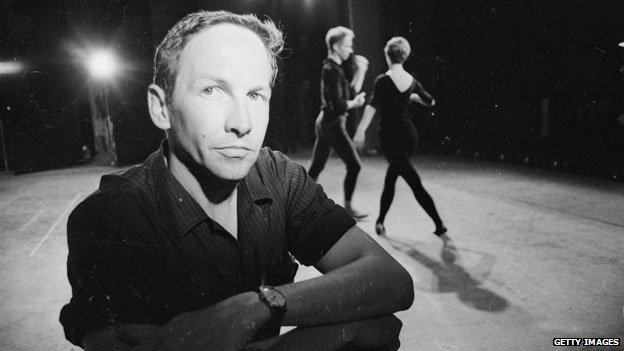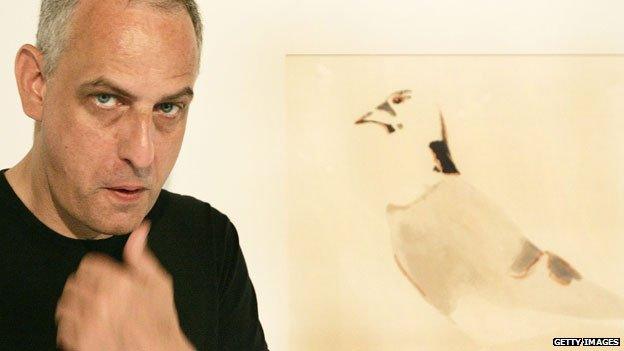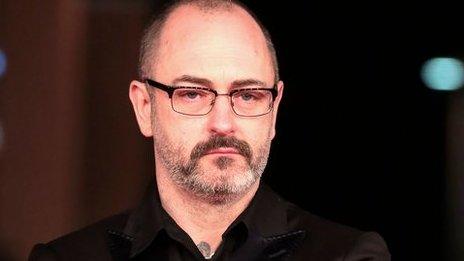The artists who destroyed their own work
- Published

Robert Rauschenberg, pictured in 1966, destroyed an artwork by Willem de Kooning
Douglas Gordon has used an axe to attack the wall of a theatre where he staged a new play to scathing reviews - but he is not the first artist to set about his own work.
There are countless instances of artists destroying their own work. If Louise Bourgeois disliked a small sculpture she'd been working on, she would simply shove it off the end of her kitchen table and watch it smash to smithereens.
Francis Bacon famously destroyed all his early work, and an impecunious Picasso would paint over pictures he thought unsuccessful because he didn't have the money to buy a fresh canvas.
When I visited the Belgian painter Luc Tuymans in his Antwerp studio earlier this year he told me that his $1m-plus paintings only ever took a day to paint. That is his way.

Luc Tuymans destroys his art if he does not like it
When he returns in the morning he either decides to send the finished painting to his dealer or destroy it. Fair enough. But that's tantamount to trashing a million bucks!
My favourite story in the long history of art destruction concerns American pop/conceptual artist Robert Rauschenberg.
Early in his career, inspired by the work of Marcel Duchamp, he decided he wanted to test the boundaries of what could be deemed a work of art.
Could a work of art be created, he wondered, through the act of erasure? He started out by rubbing out one of his own drawings. It didn't work. He felt that the destruction of a not very important work by a then not very important artist didn't really test his idea to a degree where an artwork could conceivably be made.
Act of destruction
Rauschenberg decided the only thing to do was to destroy a significant work of art by a significant artist. So, he spent the next few days plucking up the courage to visit studio of one the world's most famous artists in the 1950s, an artist whom Rauschenberg held in very high esteem.
He knocked on Willem de Kooning's studio door and was welcomed by the stern face of the Dutch-American master who wanted to know why this young buck was bothering him.
He wasn't very impressed when Rauschenberg nervously explained that he had come to ask for an original De Kooning artwork to be given to him free of charge and on the understanding it was going to be destroyed.
De Kooning growled, said he didn't approve, and then acquiesced on the grounds that young artists should be allowed to experiment. He pointed to a few artworks scattered around the studio and told Rauschenberg to pick one.
Which he did. Initially he went for a pencil drawing, but decided against it. Too easy, he thought. Instead he chose drawing that had traces of ink and maybe even paint. Much better. Much harder to erase.
Rauschenberg then took it away and laboriously worked on the act of destruction, eventually erasing all visible traces of De Kooning's image. He then took the now blank paper to Jasper Johns, his great friend and fellow artist and asked him to create a frame for the work. Johns did as he was asked and produced a label for the obliterated artwork which read:
ERASED de KOONING
ROBERT RAUSCHENBERG
1953
And lo and behold Rauschenberg had successfully made an artwork by destroying an artwork.
The framed piece of paper/artwork, external is now in the collection of America's prestigious San Francisco Museum of Modern Art.
- Published14 July 2015
